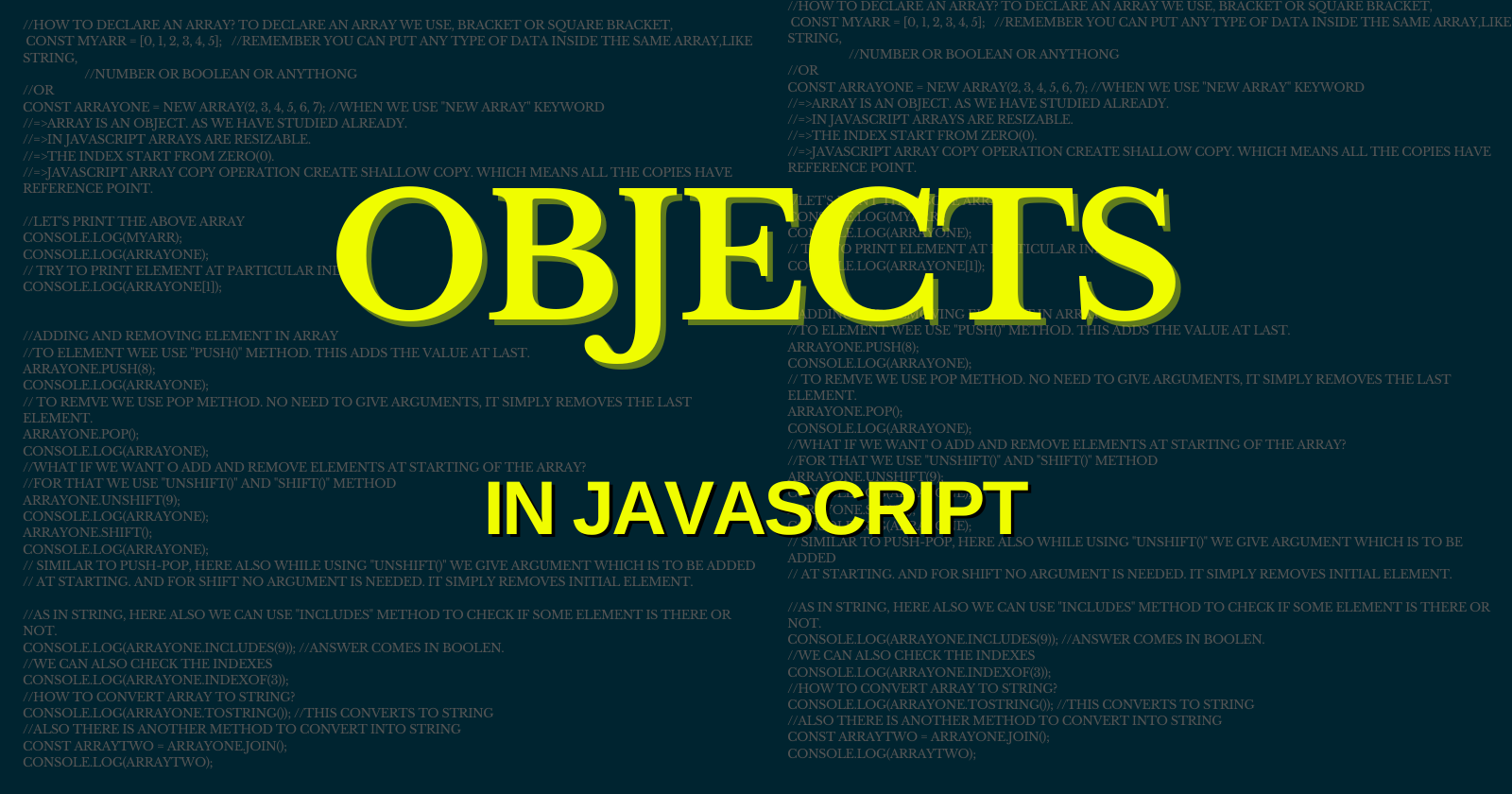Objects in JavaScript
 Manish Kumar
Manish Kumar
Objects are fundamental in JavaScript and play a central role in defining the structure of your code. In this blog post, we will explore the concept of objects in JavaScript, how to create and manipulate them, and their essential features.
What is an Object in JavaScript?
In JavaScript, an object is a collection of key-value pairs, where each key (also known as a property) maps to a value. Objects can represent real-world entities, data structures, or simply group related data together. Objects are versatile and can hold various data types, including numbers, strings, functions, and even other objects.
Creating Objects
There are multiple ways to create objects in JavaScript. Let's explore some of the common methods:
1. Object Literal:
The simplest way to create an object is using an object literal, denoted by curly braces {}. You can define properties and their values inside the braces.
const person = {
firstName: "John",
lastName: "Doe",
age: 30,
greet: function () {
console.log(`Hello, I'm ${this.firstName} ${this.lastName}.`);
},
};
2. Constructor Function:
You can create objects using constructor functions, which are similar to classes in other programming languages. Constructor functions use the new keyword.
function Person(firstName, lastName, age) {
this.firstName = firstName;
this.lastName = lastName;
this.age = age;
this.greet = function () {
console.log(`Hello, I'm ${this.firstName} ${this.lastName}.`);
};
}
const person = new Person("John", "Doe", 30);
3. Object.create():
You can create objects with the Object.create() method, which allows you to specify a prototype object.
const personPrototype = {
greet: function () {
console.log(`Hello, I'm ${this.firstName} ${this.lastName}.`);
},
};
const person = Object.create(personPrototype);
person.firstName = "John";
person.lastName = "Doe";
person.age = 30;
Accessing Object Properties
You can access object properties using dot notation (object.property) or bracket notation (object["property"]).
console.log(person.firstName); // Output: "John"
console.log(person["lastName"]); // Output: "Doe"
Adding and Modifying Properties
You can add new properties to an object or modify existing ones by simply assigning a value to a new or existing property.
person.email = "john.doe@example.com"; // Adding a new property
person.age = 31; // Modifying an existing property
Removing Properties
To remove a property from an object, you can use the delete operator.
delete person.age; // Removes the "age" property
Object Methods
Objects can contain methods, which are functions defined as properties. These methods can perform actions associated with the object.
const person = {
firstName: "John",
lastName: "Doe",
greet: function () {
console.log(`Hello, I'm ${this.firstName} ${this.lastName}.`);
},
};
person.greet(); // Output: "Hello, I'm John Doe."
Object Iteration
You can iterate over an object's properties using loops like for...in or methods like Object.keys(), Object.values(), and Object.entries().
for (const key in person) {
console.log(`${key}: ${person[key]}`);
}
const keys = Object.keys(person);
console.log(keys); // Output: ["firstName", "lastName", "greet"]
const values = Object.values(person);
console.log(values);
// Output: ["John", "Doe", 31]
const entries = Object.entries(person);
console.log(entries);
// Output: [["firstName", "John"], ["lastName", "Doe"], ["age", 31]]
Conclusion
Understanding objects is fundamental to JavaScript programming. Objects allow you to organize and manipulate data efficiently. By mastering objects, you gain a powerful tool for building complex applications and structuring your code effectively. Explore further, experiment, and embrace the versatility of objects in JavaScript to become a proficient developer.
Please like this post. Follow me and subscribe to the newsletter to get notified.
Subscribe to my newsletter
Read articles from Manish Kumar directly inside your inbox. Subscribe to the newsletter, and don't miss out.
Written by
Manish Kumar
Manish Kumar
Frontend Developer